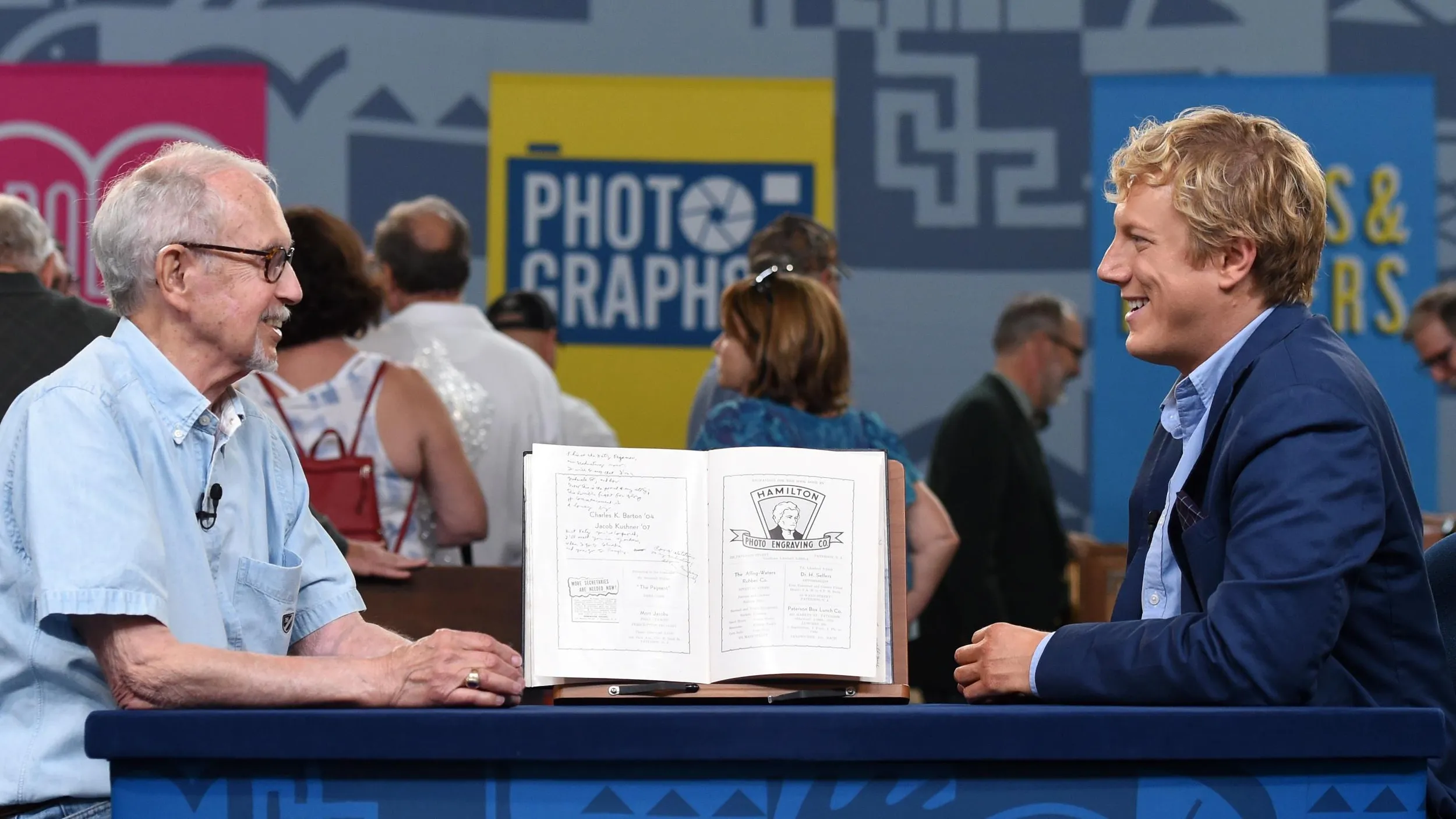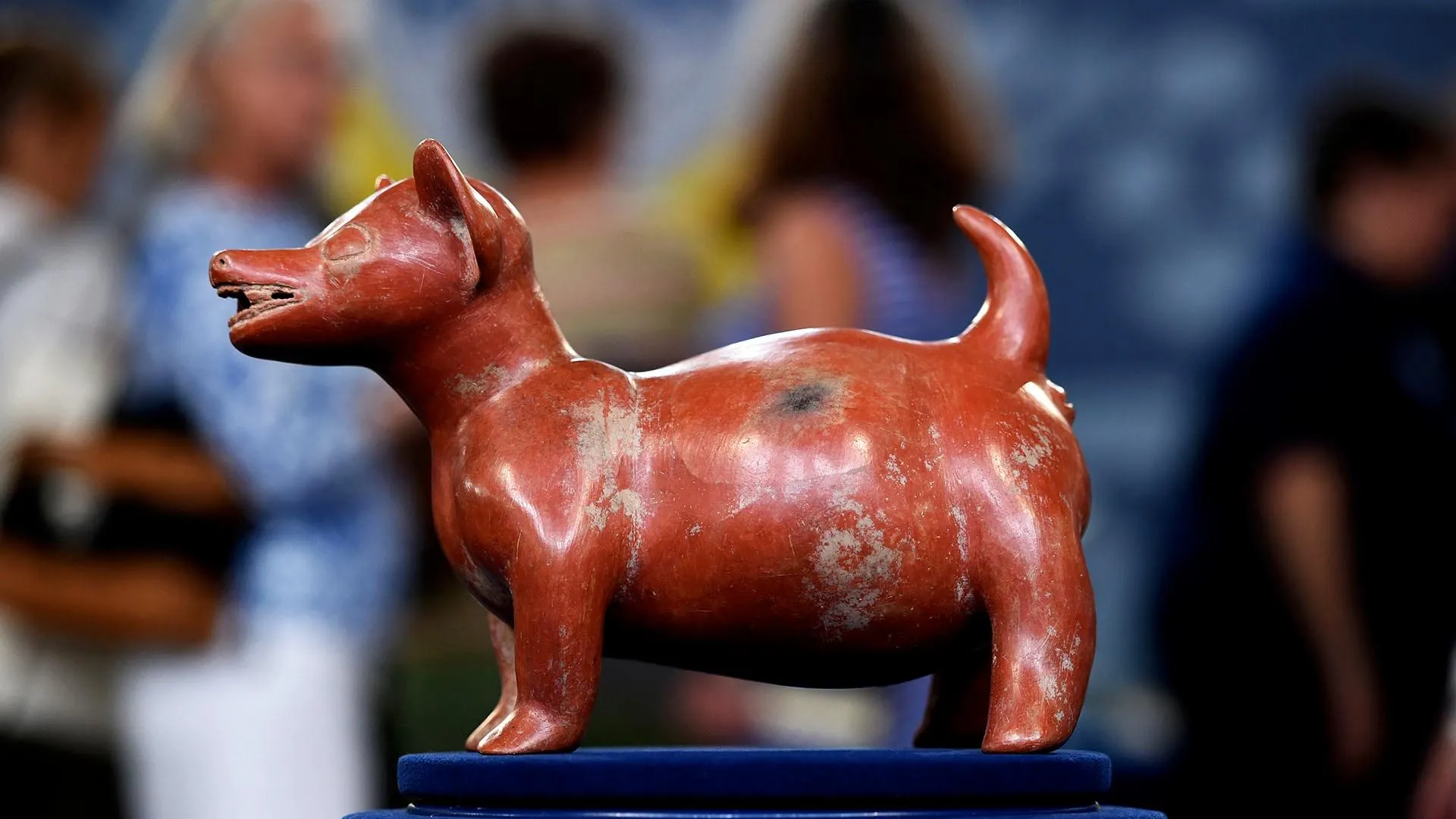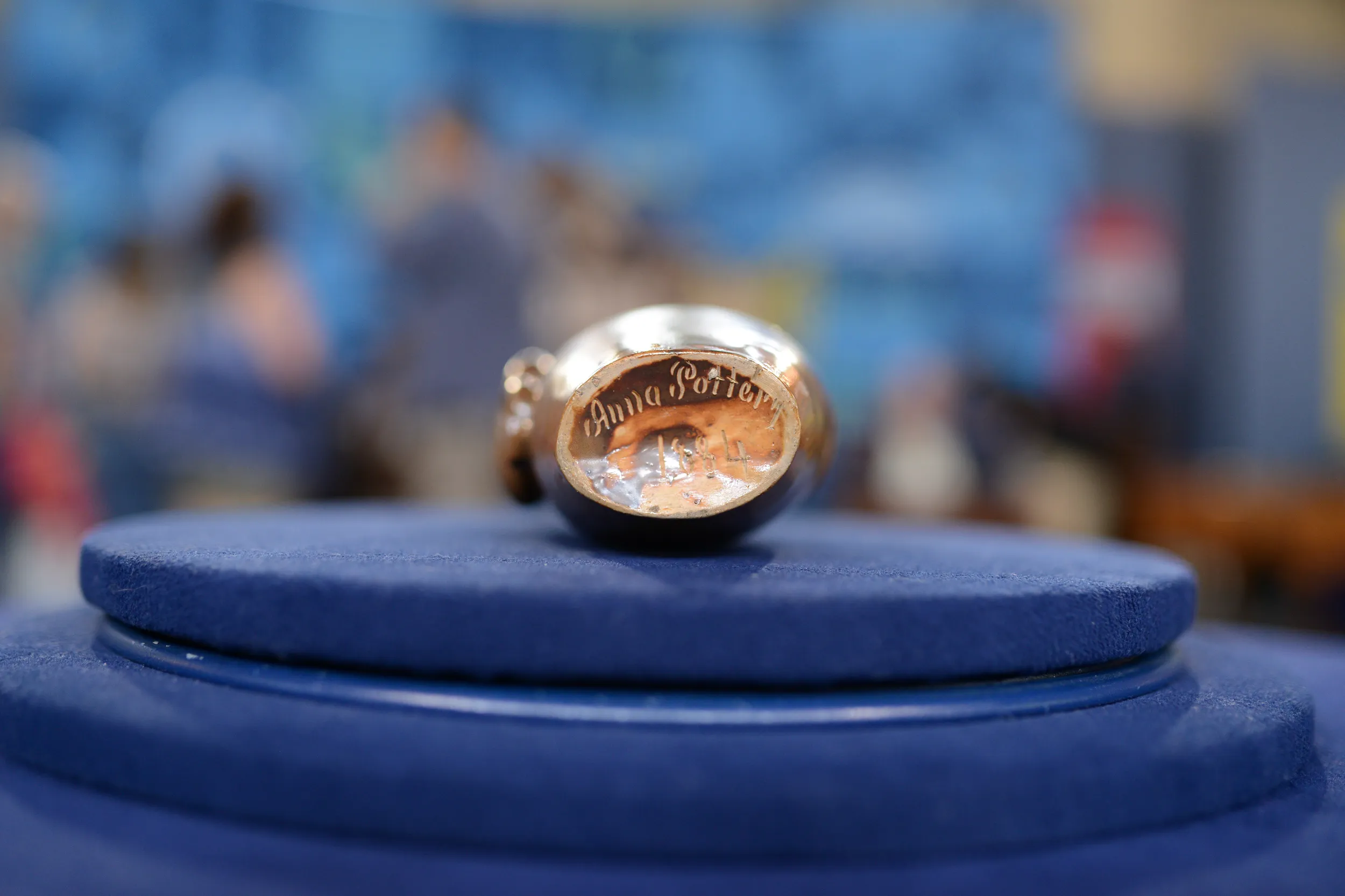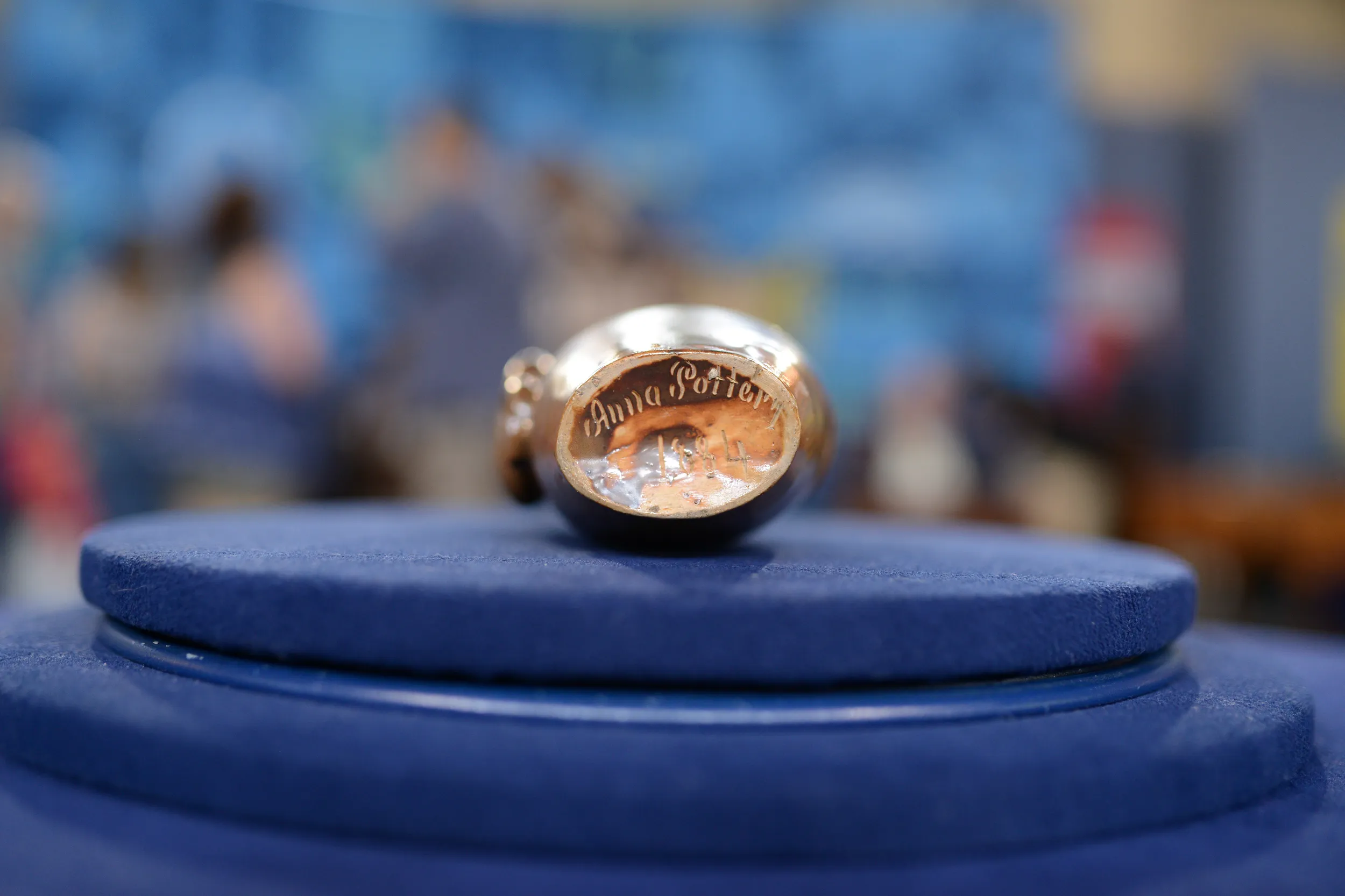GUEST: Well, this is my Harper's $500 little brown jug that has been in my family four generations, I believe, and it's now come to me. I've done very little research. All I know is that it was used, I believe, for alcohol, and that the $500 referenced some obtaining of a liquor license at the time.
APPRAISER: The Anna Pottery Company was started by two brothers. Their names were Kirkpatrick, in Anna, Illinois, and they were in business from 1850s until the 1890s. And they made stoneware pottery, and one of the things that was so unusual about them was that they used their pottery to express their political beliefs.
GUEST: Okay.
APPRAISER: And lots of times, the sayings on their pottery had something to do with temperance...
GUEST: Mm-hmm.
APPRAISER: ...political corruption. In this case, we have, of course, the serpent, the snake watching the bottle, and on the front there, it says, "Harper's $500."
GUEST: Mm-hmm.
APPRAISER: And as you go around the jug, it says, "little brown jug," and then it's got the date, 1883. That was a license law. It was called a high-tax law or a high-license law in Illinois that was passed in 1883, which made it very difficult for anybody to get a new saloon license. The people that collect American stoneware pottery are crazy about Anna Pottery. They did pig flasks with maps on them, they did jugs bigger than this with multiple snakes on them. This particular one is an unusual form because of the size, but also because of the pinched form. When it was made, it was made round and then they pinched it in to make it more of an oval shape, and if you'll look on the bottom, it says, "Anna Pottery..."
GUEST: Right.
APPRAISER: and the date, 1884. I read that the brothers at the pottery actually had a snake pit there.
GUEST: Really?
APPRAISER: And they used to go over and study the snakes, I guess, before they would model them.
GUEST: Uh-huh.
APPRAISER: And they would go out and sell their wares and actually take the snakes with them.
GUEST: Wow!
APPRAISER: So, have you had any ideas about what you thought it might be worth?
GUEST: No, just because... there's not really anything conclusive about this particular style that I found.
APPRAISER: Well, one just like it sold at auction two years ago for $10,400.
GUEST: You're kidding?
APPRAISER: No.
GUEST: Okay, that's much more valuable than I would have thought, okay.
APPRAISER: Yeah, for insurance purposes, you probably could put $12,000 on it.
GUEST: Okay.
APPRAISER: It's fantastic, it's a rare form. Not only that, but it's in perfect condition. Thank you so much for bringing it in, it made my day.














